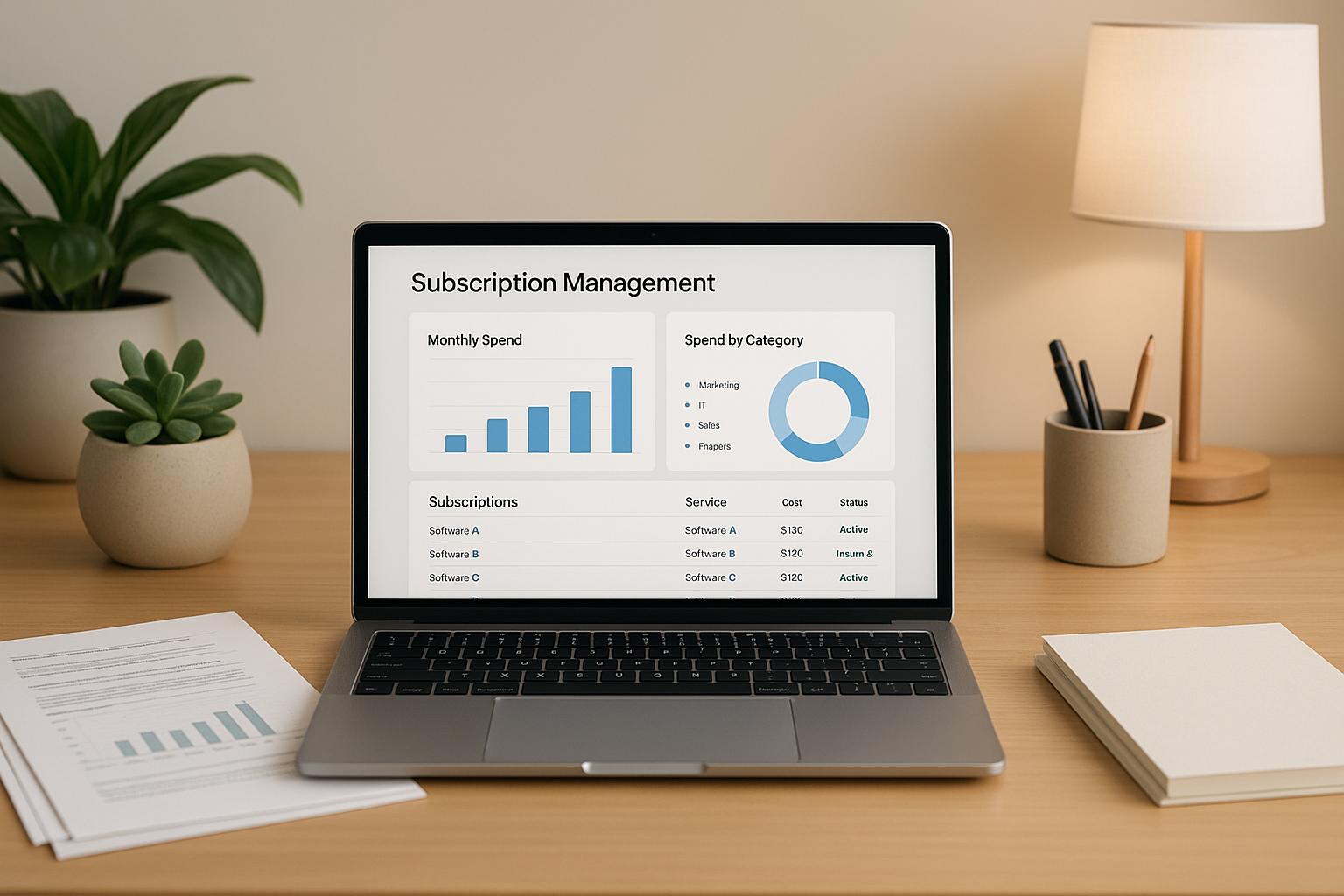Limitations of IRR in VC Performance Evaluation

Internal Rate of Return (IRR) is widely used in venture capital to measure annualized profitability, but it has critical flaws that can mislead investors. Key limitations include sensitivity to cash flow timing, unrealistic reinvestment assumptions, and its inability to reflect absolute dollar returns. These issues can distort fund performance evaluations, especially in the context of irregular cash flows, early exits, and portfolio-level aggregation.
To address these gaps, venture capital professionals often rely on additional metrics:
- MOIC (Multiple on Invested Capital): Shows total value creation but ignores the time value of money.
- DPI (Distributed to Paid-In): Focuses on actual cash returned to investors.
- TVPI (Total Value to Paid-In): Combines realized and unrealized returns for a comprehensive view.
- PME (Public Market Equivalent): Compares private equity returns to public market benchmarks.
Using a combination of these metrics provides a clearer picture of a fund’s performance, aligning with its stage and strategy. While IRR remains a useful tool, it should be part of a broader evaluation framework to avoid misleading conclusions.
Main Problems with IRR in Venture Capital
While IRR has long been a go-to metric for evaluating investments, it comes with a host of challenges when applied to venture capital. These shortcomings can mislead investors and paint an inaccurate picture of a fund's performance.
Cash Flow Timing Issues
One of IRR's biggest flaws is its sensitivity to cash flow timing. In venture capital, where cash flows are naturally uneven, this becomes a major problem. Funds might go years without generating any significant returns, only to see a sudden influx of cash from a successful exit. These irregularities can cause IRR to fluctuate wildly, making it an unreliable gauge of consistent performance.
The issue is even more pronounced when fund managers delay capital calls. By postponing the use of committed capital, they can artificially shorten the investment period, which boosts IRR without reflecting the fund's actual performance. This timing sensitivity is at the root of many distortions in IRR calculations.
Unrealistic Reinvestment Assumptions
IRR also falters because it assumes all distributed cash flows are reinvested at the same rate of return. This assumption is far from realistic. For instance, if a fund achieves a 50% IRR on an early exit, IRR calculations presume that the distributed cash can immediately be reinvested at that same high rate. In practice, finding comparable opportunities is often impossible.
A striking example comes from a large industrial company that approved 23 major projects over five years based on IRRs averaging 77%. When the reinvestment rate was adjusted to reflect the company's actual cost of capital, the average return dropped dramatically to just 16%.
Early Exit Distortions
Early exits can artificially inflate IRR by shortening the time horizon and boosting annualized returns, even if the overall portfolio value takes a hit. This creates a troubling incentive for fund managers to prioritize quick exits over long-term growth, potentially compromising the broader success of the portfolio.
Missing Total Dollar Returns
IRR's focus on percentages often overlooks the bigger picture: total dollar returns. A small investment with a high IRR might generate far less value than a larger investment with a lower IRR. This focus on percentages can lead investors to chase flashy numbers rather than assessing the actual economic impact of their investments.
"You can't eat IRR." - Howard Marks, Oaktree Capital
Portfolio Aggregation Problems
Combining IRRs across a portfolio is another headache. The unique cash flow patterns of individual investments can yield multiple IRR solutions, adding confusion to the analysis. For venture capital firms, and especially fund-of-funds managers, calculating a meaningful portfolio-level IRR requires meticulous analysis and careful handling of data. Even small errors can skew the results, making it an unreliable metric for aggregated performance.
Better Metrics for VC Performance
To overcome the limitations of traditional metrics like IRR, venture capital professionals rely on alternative measurements that offer a clearer and more reliable view of investment performance. These tools address IRR's blind spots and help investors gain a deeper understanding of their portfolio's success.
MOIC (Multiple on Invested Capital)
MOIC measures how much your invested capital has multiplied. It’s calculated by dividing the total value received (or expected to be received) by the initial investment. The result is a simple multiplier.
For instance, if you invest $1 million and receive $3 million in return, your MOIC is 3x. Unlike IRR, MOIC doesn’t factor in the timing of cash flows or reinvestment rates, making it particularly useful in early-stage venture capital where cash flows can be unpredictable and take years to materialize.
The appeal of MOIC lies in its straightforward nature. A 5x return is easy to interpret without needing to untangle complex annualized calculations. However, it doesn’t account for the time value of money. A 3x return over two years looks identical to one over ten years, even though their actual value differs significantly.
DPI (Distributed to Paid-In)
DPI focuses on cash in hand, measuring the actual distributions investors have received compared to what they’ve contributed to the fund. It’s a concrete metric because it only considers money that has already been returned.
For funds several years into their lifecycle, DPI offers a clear view of realized performance. A DPI of 1.5x means investors have received $1.50 for every dollar they contributed. This metric eliminates the uncertainty tied to unrealized valuations and focuses solely on tangible returns.
However, DPI has its limitations, especially for younger funds or those holding long-term positions. A fund may hold highly valuable portfolio companies that haven’t yet exited, leaving DPI blind to this potential. It’s a backward-looking metric that reflects what has happened, not what could happen.
TVPI (Total Value to Paid-In)
TVPI provides a snapshot of both realized and unrealized value by combining distributed cash with the current estimated value of remaining investments. The formula is simple: TVPI = (Distributed Capital + Residual Value) / Paid-in Capital.
This metric bridges the gap between DPI and MOIC, offering a more comprehensive view. While DPI ignores unrealized value and MOIC may not reflect partial distributions, TVPI combines both. As Megann Freston, Director of Product Marketing at Allvue Systems, explains:
"The best assessment comes from deep dives into and across all three figures - and other, similar performance metrics."
TVPI is particularly useful for ongoing evaluations as it evolves with portfolio growth and changing market conditions. For example, a TVPI of 2.8x indicates that, based on current valuations, investors can expect $2.80 for every dollar invested.
The relationship between these metrics is straightforward: TVPI = DPI + RVPI (Residual Value to Paid-in Capital). This breakdown allows investors to see how much of the value comes from realized exits versus unrealized holdings.
Public Market Equivalent (PME)
PME helps investors determine whether their private equity investments outperform public market alternatives. This metric simulates how private equity cash flows would have performed if invested in a public market index instead.
Over the past 25 years, the Cambridge Associates US Private Equity Index achieved a pooled net return of 12.09%, compared to 8.46% for the Russell 2000 and 9.38% for the S&P 500. PME sheds light on whether the additional returns justify the illiquidity and complexity of private investments.
The calculation involves applying each capital call to a public market benchmark and withdrawing distributions from the same benchmark. A PME ratio above 1.0 signals that the private investment outperformed public markets, while a ratio below 1.0 indicates underperformance.
PME’s strength lies in its ability to account for market conditions and timing. Unlike IRR, which operates in isolation, PME provides context by comparing private equity cash flows with liquid, transparent public market alternatives. This allows for direct comparisons across different time periods.
There are several PME methodologies, including Long-Nickels PME, PME+, and Kaplan-Schoar PME, each addressing specific aspects of this comparison. Regardless of the approach, PME equips investors with valuable insights, enabling them to refine strategies and make informed decisions. Together, these metrics complement IRR, creating a more rounded framework for evaluating venture capital performance.
IRR vs Other Metrics Comparison
Building on IRR's cash flow timing and reinvestment challenges mentioned earlier, let’s see how it stacks up against other performance metrics. Venture capital professionals often use multiple metrics to get a fuller picture of investment performance. Each metric highlights a different aspect of success, and their unique strengths and weaknesses become clearer when compared side by side.
IRR’s biggest advantage - and drawback - is its sensitivity to time. Unlike MOIC, which focuses purely on absolute value, IRR accounts for the time value of money. This makes it useful for comparing investments across varying timelines. However, its reliance on the assumption that interim cash flows are reinvested at the same rate can lead to misleading conclusions about long-term performance.
Another key distinction lies in scale. IRR measures percentage returns but doesn’t reflect the absolute dollars earned. For example, a 50% IRR on a $10M investment might generate less total profit than a 25% IRR on $100M. Yet, when viewed through IRR alone, the smaller investment might seem more attractive.
Timing also plays a role. IRR calculates returns based on when the cash is deployed, not when it’s committed. This means it overlooks the impact of uncommitted capital sitting idle, which can create a gap between reported returns and the actual investor experience. The following table highlights these differences in a side-by-side comparison.
Metric Comparison at a Glance
Here’s a quick breakdown of how these metrics differ in their focus and applications:
| Metric | Time Sensitivity | Dollars Captured | Realized vs. Unrealized | Best Use Case | Key Limitation |
|---|---|---|---|---|---|
| IRR | High – considers timing of all cash flows | No – percentage-based only | Both, but timing-sensitive | Comparing investments across different timeframes | Skewed by early exits and unrealistic reinvestment assumptions |
| MOIC | None – ignores time value of money | Yes – shows total value multiplication | Both realized and unrealized | Quick snapshot of total value creation | Treats a 3x return over 2 years the same as one over 10 years |
| DPI | None – focuses on cash received | Yes – actual dollars distributed | Realized only | Evaluating tangible, cash-in-hand returns | Ignores unrealized potential |
| TVPI | None – snapshot of current value | Yes – combines distributed and residual value | Both realized and unrealized | Assessing overall fund value at any given point | Relies on potentially subjective unrealized valuations |
When it comes to interpretation, MOIC is the easiest to grasp - a 5x return simply means five times your initial investment. DPI offers clarity by focusing on distributed cash, while TVPI combines both realized and unrealized value, requiring a bit more nuance. IRR, on the other hand, demands a deeper understanding of annualized returns and their potential distortions.
The stage of a fund also influences which metric is most relevant. Early-stage funds may show misleadingly high IRRs due to the J-curve effect and longer holding periods. In these cases, MOIC and TVPI often provide more stable indicators. For later-stage funds with shorter timelines, IRR might be more reliable, though its reinvestment assumption remains a challenge.
The interplay between these metrics reveals important insights. A fund could boast a high IRR but deliver relatively modest absolute returns. Conversely, another fund might generate substantial wealth despite reporting lower percentage gains.
Market context adds yet another layer. While IRR evaluates returns in isolation, PME-adjusted metrics compare them to public market benchmarks. This is particularly important for limited partners (LPs) deciding if the added complexity and illiquidity of private investments are worth the returns. Studies show that venture funds generally take about six years to stabilize in their quartile rankings, with 80% to 90% of funds shifting across three quartiles during their lifecycles.
These differences highlight why using multiple metrics is critical for evaluating venture capital performance. Relying solely on IRR can lead to flawed decisions, as its sensitivity to cash flow timing can produce vastly different results for identical economic outcomes.
As a result, many in the industry now adopt a multi-metric approach. Instead of discarding IRR, they pair it with other metrics to address its shortcomings, offering a more rounded view of performance.
sbb-itb-e766981
How to Evaluate VC Performance Properly
Evaluating venture capital (VC) performance isn’t as simple as looking at a single number like IRR. The nuances of VC returns call for a more strategic approach that takes into account different metrics, each offering unique insights. The goal is to understand how these metrics work together to provide a comprehensive view, tailored to the fund’s stage, strategy, and the investor’s goals.
Using Multiple Metrics Together
No single metric tells the whole story. That’s why effective evaluation blends multiple metrics, giving both a narrative and a quantitative snapshot of performance. While IRR is a popular benchmark, it has its blind spots. Pairing it with other metrics like MOIC, TVPI, and DPI fills in the gaps.
- MOIC (Multiple on Invested Capital) shows the total value created, regardless of timing, offering an absolute measure of growth.
- TVPI (Total Value to Paid-In) combines realized and unrealized returns, giving a snapshot of a fund’s current value.
- DPI (Distributed to Paid-In) focuses on cash distributions, showing how much value has been returned to investors.
These metrics are particularly useful when evaluating funds at different lifecycle stages. For example, early-stage funds often show high RVPI (Residual Value to Paid-In) and low DPI because most investments are unrealized. Mature funds, on the other hand, tend to have stronger DPI as successful exits convert value into cash. By analyzing these metrics together, investors can uncover practical insights. For instance, a high IRR paired with low MOIC might signal strong timing but limited overall value creation. Conversely, a high MOIC with lower IRR could indicate substantial value that took longer to materialize.
This multi-metric approach also aligns naturally with specific fund strategies.
Matching Metrics to Fund Strategy
Not all funds are created equal, and their performance metrics shouldn’t be either. Early-stage funds, growth-stage funds, and buyout funds operate under different timelines and expectations, requiring tailored evaluation methods.
- Early-stage funds aim for outsized returns, often targeting a 30% IRR or higher. Metrics like RVPI and TVPI are particularly useful early on, as they highlight unrealized potential.
- Later-stage funds focus on more moderate returns (typically 3× to 5×) with shorter holding periods. For these funds, DPI and IRR become more relevant earlier in the fund’s lifecycle.
Geographic and market contexts also play a role. For instance, a 15% IRR in Europe could outperform a 22% IRR in the U.S., depending on factors like market conditions, regulatory environments, and competition. Benchmarking against regional and vintage-year data ensures a fair comparison, rather than relying solely on raw numbers.
Given the complexity of these metrics, professional financial expertise is often necessary to implement them effectively.
Getting Professional Financial Support
Evaluating VC performance using multiple metrics isn’t just about crunching numbers - it requires sophisticated financial tools and expertise. This is where specialized support comes into play.
Phoenix Strategy Group offers advanced financial and strategic advisory services designed to simplify and enhance VC performance evaluation. Their systems integrate multiple data sources, creating real-time dashboards that track metrics like IRR, MOIC, TVPI, and DPI simultaneously. By automating data collection and analysis, they reduce manual errors and provide up-to-date insights into fund performance.
Their Integrated Financial Model connects individual portfolio company performance to fund-level metrics. This helps fund managers see how specific investment decisions impact overall results. Real-time data synchronization ensures that metrics reflect the latest market conditions and valuations.
Phoenix Strategy Group also supports fundraising efforts by helping fund managers present performance data in a way that resonates with LPs. They offer strategies for highlighting unrealized potential and minimizing perceived risks. Additionally, their M&A advisory services assist in evaluating exit strategies and their impact on key metrics.
One standout offering is their Monday Morning Metrics system, which delivers weekly performance updates. This tool enables fund managers to make proactive decisions about follow-on investments, exit timing, and LP communications. For funds that need high-level financial management without the full-time cost, their fractional CFO services provide a cost-effective solution.
Phoenix Strategy Group’s expertise and tools are well-suited to the complex demands of modern VC performance evaluation, ensuring fund managers and LPs have the insights they need to make informed decisions.
Conclusion
The venture capital industry's reliance on IRR as the go-to performance metric creates significant blind spots for investors and fund managers alike. IRR has its flaws - its sensitivity to cash flow timing, unrealistic reinvestment assumptions, and inability to reflect absolute value can all skew performance assessments.
As Howard Marks of Oaktree Capital famously said, "You can't eat IRR" - a reminder that impressive percentage returns mean little without considering the actual dollars generated. Additionally, IRR's bias toward shorter-duration investments often leads to decisions that overlook the potential of more lucrative long-term opportunities.
No single metric can tell the whole story. IRR’s timing sensitivity can produce misleading results, making it clear that a broader evaluation framework is essential.
Key Takeaways
Adopting a multi-metric approach - combining IRR with MOIC, TVPI, and DPI - helps address these limitations and provides a more complete view of performance. Each metric has its role:
- MOIC highlights the total value created, independent of timing.
- DPI focuses on the actual cash returned to investors.
- TVPI offers a full picture by combining realized and unrealized returns.
Fund managers and limited partners (LPs) should align their evaluation methods with their fund's strategy and stage. Early-stage funds may show high unrealized value, while mature funds should demonstrate strong cash distributions. Numbers alone don’t tell the story - context is just as important.
Evaluating modern venture capital performance requires advanced tools and expertise. Investors should treat IRR as just one piece of the puzzle, using it alongside other metrics for a more balanced and accurate assessment. This broader approach not only clarifies fund strategies but also leads to smarter allocation decisions.
For customized strategies that incorporate this multi-metric framework into your evaluations, consider connecting with Phoenix Strategy Group.
FAQs
What are the limitations of using IRR to evaluate venture capital performance?
The Internal Rate of Return (IRR) comes with a few notable shortcomings when it’s used to evaluate venture capital performance. One key issue is its reliance on the timing of cash flows. This often skews results in favor of investments that generate faster returns, even if those returns are smaller compared to investments with greater long-term potential. Another flaw is the assumption that all interim cash flows are reinvested at the same rate as the IRR itself - an assumption that rarely holds true in the real world of venture capital.
IRR also fails to consider the absolute size of returns, which makes it less useful for comparing funds that operate on vastly different scales. Its sensitivity to the timing of cash flows can further complicate comparisons, particularly when assessing funds with varying investment horizons or exit strategies. To get a more complete understanding of performance, metrics like DPI (Distributions to Paid-In Capital) and TVPI (Total Value to Paid-In Capital) are often used alongside IRR, offering a broader perspective on returns.
How do MOIC, DPI, and TVPI enhance IRR to give a fuller picture of a fund's performance?
MOIC, DPI, and TVPI: Understanding Fund Performance Metrics
When evaluating a fund's performance, metrics like MOIC (Multiple on Invested Capital), DPI (Distributions to Paid-In Capital), and TVPI (Total Value to Paid-In Capital) work alongside IRR to paint a fuller picture. While IRR focuses on time-adjusted returns, these metrics zero in on absolute returns and realized gains.
- MOIC reflects the total value created in relation to the capital invested, offering a snapshot of overall performance.
- DPI emphasizes the portion of returns already distributed back to investors, showcasing realized gains.
- TVPI combines DPI with the fund's remaining unrealized value, giving a broader perspective on both realized and potential returns.
By combining these measures, you get a well-rounded view of a fund’s performance, balancing both current payouts and future potential against the backdrop of time-based returns.
What are the advantages of using the Public Market Equivalent (PME) to evaluate venture capital performance?
The Public Market Equivalent (PME) serves as a practical way to measure how private equity investments stack up against public market performance. It gives investors a solid benchmark to determine if a fund has exceeded or fallen short compared to broader market indices.
By factoring in risk-adjusted returns and considering market fluctuations, PME provides a more thorough and consistent perspective on performance over time. This makes it an essential tool for investors aiming to gauge the actual contribution of private equity investments within the larger market landscape.




